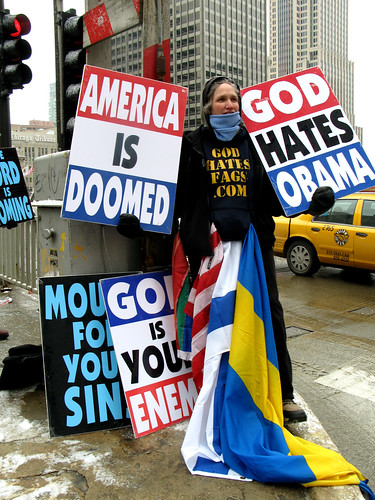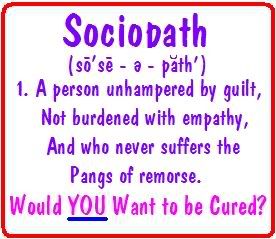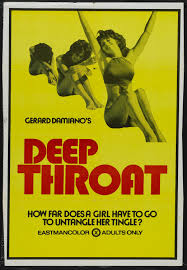 Before my beloved and I could get married in the Church, I had to write a letter to the Bishop explaining myself. The talking points included supporting my husband in his Catholic faith and my commitment to raising Catholic children. I was also to address my reluctance to convert, which is to say make a case for my refusal.
Before my beloved and I could get married in the Church, I had to write a letter to the Bishop explaining myself. The talking points included supporting my husband in his Catholic faith and my commitment to raising Catholic children. I was also to address my reluctance to convert, which is to say make a case for my refusal.  I own an autographed copy of Mary Daly’s Beyond God the Father. And I could have stopped right there.
I own an autographed copy of Mary Daly’s Beyond God the Father. And I could have stopped right there.Daly, the author of Gyn/Ecology went on to write Webster’s’ First New Intergalactic Wickedary of the English Language, Conjured in Cahoots with Jane Caputi. Long before I met my husband, at the book signing for the Wickedary in a small bookstore in Claremont, California, I offered up my copy of Beyond God the Father for her signature. My roommate and I had driven 40 minutes to sit with a handful of other women and listen to Daly read. She looked nothing like we expected. We expected what Janeane Garofalo looks like now. Daly looked like a grandma—soft in the middle with the tightly permed gray hair favored by women of the Great Generation. She was wearing a quilted vest with multicolored appliqués of battleaxes on the sides—a friend had made it for her, she joked, from one battleaxe to another.

How do I unpack that paragraph for anyone unfamiliar with Mary Daly? Officium Libri Catholici published her first book. I’m pretty sure that means her 1966 book Natural Knowledge of God in the Philosophy of Jacques Maritain got the thumbs up from Rome. Two decades later, she was fired from Boston College, a Jesuit university, because as a feminist separatist she refused to allow male students to attend her graduate seminar on women’s spirituality. As a feminist separatist, she believed that the patriarchy is so pervasive, entrenched, and toxic that the only way for a woman to retain authenticity and integrity, is to foreswear men and make a politically motivated choice to sleep only with other women. (Women with daddy issues unite! Closet lesbians who need a good excuse unite! I was the former, and my roommate was the latter.)
I “went to art school” and by that, I mean I kissed a girl and I liked it (though not the earlier mentioned roommate). I also kissed a much larger number of boys, and I liked that too. For many years, the split between my mind and body was so deep, bodies were irrelevant to me in many ways, most notably irrelevant to me was their gender. I did not fall in love with bodies; I had crushes on people. (I didn’t really know what love was until I met my husband—and, as we all know, every angel is terrifying.)
Ok, so here we have a person who at one time described herself as a radical, but not separatist, feminist (and still does). A person who proudly attended the Los Angeles March for Women’s Lives and still has her ticket stub. A person who believes in her heart of hearts that Christians as a category and Catholics in particular are overly obsessed with what other people are doing with their mucus membranes and with whom—as if the marital relationship, the love relationship, at its core is best understood by Tab B fitting into Slot A—and not just any Tab and not just any Slot, but specific Tabs and Slots owned by specific souls—do souls have gender? I wonder—but not really, because I am certain that they do not. But there’s no point in bringing it up with the Church. The Church is obsessed with keeping penises out of anuses and keeping female mouths and hands away from vulvas.
 To this I say, they should give back all the art produced by sodomites. Sell it all and give the money to orphans. For starters: The Sistine Chapel as presented by Verizon Wireless.
To this I say, they should give back all the art produced by sodomites. Sell it all and give the money to orphans. For starters: The Sistine Chapel as presented by Verizon Wireless.  So, it probably comes as little shock that my husband warned me to stick to my talking points in my letter to the Bishop. (A recurring theme in our relationship—with each other and mine with the Church: Don’t tell the whole truth. Don’t dig too deeply. Don’t pick at it. It, whatever it is, is a mystery.)
So, it probably comes as little shock that my husband warned me to stick to my talking points in my letter to the Bishop. (A recurring theme in our relationship—with each other and mine with the Church: Don’t tell the whole truth. Don’t dig too deeply. Don’t pick at it. It, whatever it is, is a mystery.)I didn’t mention the book or my views on same sex marriage, women in the priesthood, or the importance of women controlling their bodies and owning their sexuality, but I did tell the truth.
The draft I shared with my husband included the following thesis: While I do not think I can be a good Catholic, I am certain that I can raise good Catholics. Since I do not come from a strong faith tradition, and since we believe having a faith tradition is important, I will support my husband’s faith practice.
My husband sat down at the computer and deleted the phrase, while I do not think I can be a good Catholic and all of its supporting statements, whole paragraphs.
At the time, I believed he was simply doing the tap dance his mother needed to be happy with our union; and in order to do that tap dance; he needed to do another for the Church. (This raised many questions about his integrity.) For many years thereafter, I believed his insistence on having a “Catholic family” was more about imposing his will, getting his way, winning in a long series of power struggles in which getting his way seemed more important than any other principle that may have applied.
While all of those things are true, it is also true that—when we hadn’t been to any house of worship for a few years except in the company of his family or mine, and I said I would be attending the Shambhala Meditation Center in Berkeley, California with our eldest and then only child—he refused “to allow it” and said he and our girl would be attending mass at our local parish.
Because I was not lying about anything in my draft, his “refusal”—if pompous, and I may add in the spirit of Daly, Dick-tatorial—was fine by me: at least the family would be attending worship services with greater frequency than an obligatory genuflection at Easter and Christmas.
Five years later, I have been to mass most Sundays give or take family vacations and household DIY project weekends. Because I think it’s important to worship as a family. Because I don’t like the idea of driving the hatchback by myself to the nearest Unitarian church while the rest of my family attends mass. Because when I made my vows, it was clear that while my conversion wasn’t mandatory, it wouldn’t hurt. Because when I made my vows, I meant them. I intended to be The Face of Love in my husband’s life. (While he may claim I am the embodiment of a mean and spiteful Old Testament stern father ogre, I have tried to be the embodiment of the compassionate and forgiving New Testament nurturing mother archetype. What we most despise in ourselves…) Because whether any of us like it or not, the Catholic Church is my faith community—we’re stuck with each other. Because when you raise Catholic children—they go to Faith Formation classes, they attend special masses for children and first communicants, there are parent meetings—there simply isn’t enough time to uphold another faith practice if you are the primary caretaker of said children.
However, his “refusal” has shut down the other possible options. It would be cruel and confusing and counterproductive and undermining of the whole worshipping-as-a-family project to change course at this point—but then I spend a lot of time thinking about what would be best for the kids.
Yep, no one is twisting my arm. I chose all of it. The husband. The children. The family. The Catholic family. I expressly did not choose a traditional marriage in which my husband “puts his foot down” or “refuses to allow” or announces, “this conversation is over.”
I will get more from conversion than it will cost me.
He would get more from conversation than his refusal will cost him.
So, how does a person, me, get from Point A: The Catholic Church is the Patriarchy (Malleus Maleficarum/holocaust of women, The Crusades, Eve was framed) to Point B: The Catholic Church is full of mystics, radicals, and progressives (Thomas Merton, Dorothy Day, Romero, Sean Penn, Fr. Gregory Boyle, Sr. Helen Prejean, Fr. Robert Drinan)?
One possible answer: the universe (God) made sure I found people in whom I would see a possible reflection of what I might become, a reflection in which I was Catholic, the way they are Catholic. Like the kente cloth/Peruvian hat and braids image, my list of Catholics (not all in good standing with the Church) tells me it is possible be a Catholic and still be me.
Sr. Helen Prejean
Fr. Greg Boyle






























